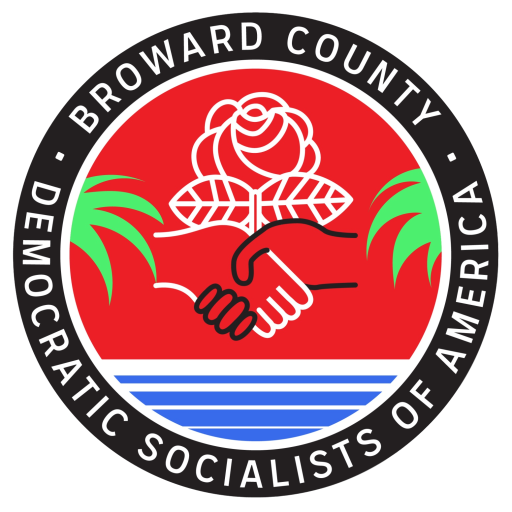
3 Takeaways from Georgia’s Runoffs

The Georgia runoff election is an important window into the political trends of both Georgia and the country at large. Although the individual characters of Herschel Walker and Raphael Warnock are important, it is equally important to understand the larger movements at play, in order to inform a political strategy that advances the interests of the working class.
Raphael Warnock is not a socialist. His voting pattern has been squarely in line with the record of Democratic Party leadership, although he has taken notably progressive stances on specific votes such as student loan forgiveness. However, it is significant that the Republican Party did its best to portray him as the imagined radical socialist of which they caricature even the most milquetoast Democrats. This strategy ultimately failed.
The obvious answer for why lies in his opponent. Herschel Walker, with his record as a multi-millionaire scammer, domestic abuser, and reactionary extremist, proved repulsive to enough Georgia voters that fear of “socialism” was insufficient for him to win. However, Walker’s actual policies fall squarely in line with the core of the Republican Party, and his nomination as the GOP Senate candidate was virtually uncontested among Georgia Republicans.
The truth about American politics, that is rarely discussed directly in the press, is that the vast majority of the electorate’s votes can be predicted before any counting begins. While there are variations between individual voting habits, there are certain trends that are impossible to ignore. The vast majority of black voters, especially working class black voters, vote Democratic. Likewise, the vast majority of rural, evangelical Christian white voters, will vote Republican. Similar tendencies are visible in trends of college-educated white voters in dense, urban districts; older, white non-college-educated men; etc. Altogether, the number of “swing” voters is relatively small, even though they are the disproportionate focus of political ads, network television focus groups, and newspaper editorials.
Despite these polarizations, there are elements of the elections that are difficult to predict in advance. Why was Warnock able to win, when Barack Obama, an equally charismatic candidate, decisively lost to weak Republican opponents twice? To answer this question, we must pay attention to the changes in the margins, particularly in the shifts in demographics in Georgia, and the shifts in party coalitions.
There are three key observations from the runoff results that indicate far more at play than the candidates as individuals.
1. Racial Polarization
The racial polarization of Georgia’s rural working class remains a strong force. Nonwhite working class voters have historically been a core constituency of the Democratic Party, but starting with Donald Trump’s reelection attempt in 2020, Republicans have seen surprising gains with Hispanic and Asian voters, with varying degrees in different regions around the country. Republican strategists cynically hoped that Walker’s candidacy would expand these trends to the black vote.
Looking at December’s results, however, there was no indication that the Republicans gained ground with rural black voters, with Warnock flipping the predominantly black rural areas of Washington County and Baldwin County from the November election. Conversely, while Warnock improved his margins in the predominantly white industrial regions of Glynn County and Lowndes county, they still voted overwhelmingly Republican. This polarization of the working class remains a long-term barrier for building a robust political movement against the capitalist class. Georgia, and much of the deep south, are right-to-work states in large part because of racist propaganda in the postwar period.
2. Changing Suburbs
The Atlanta suburbs have increasingly become home to black and Hispanic workers, which provided the margins needed for Joe Biden, Jon Ossoff, and Raphael Warnock to win their seats. Once strongly Republican upper-middle-class strongholds, these counties’ demographics have massively changed due to working-class black and Hispanic people moving away from the city core and rural areas and into the more affordable suburbs.
Share of Votes for Democratic Candidates by County
These regions have also been the notable sites of militant labor struggles, including the locations of the John Deere and Nabisco strikes last year. A critical test in the coming years will be whether the Democratic leaders can respond adequately to the labor movement that has contributed so much to their victories. Unfortunately, their recent betrayal of rail workers is a worrying sign in this regard.
3. Abortion Rights
The right to abortion is a critical issue facing the working class, and it was a major factor in this year’s elections. Although Hershel Walker has shown unique hypocrisy in his record of funding abortions, his platform on abortion rights is in no way unique for Republicans. The Republican leadership, and the overwhelming majority of their politicians, are extremists who wish to end the right to bodily autonomy. Although Georgia lacks ballot initiatives, anti-abortion referendums have resoundingly failed even in deeply conservative states such as Kansas and Kentucky. The election results and exit polls show that the Supreme Court’s overturning of Roe v Wade was a major motivation for working-class people to cast their vote against Republicans.
Tasks for Socialists
While Warnock’s victory represents a defeat of the reactionary right, socialists cannot rely on politicians to protect the working class out of some inherent generosity. It is necessary to organize from below and force elected officials, even ostensible “progressives” to fulfill their mandate.
With the Democrats now having 51* votes in the Senate, there is no excuse for their failure to codify Roe vs Wade, pass the PRO Act and fully fund the NLRB. Such actions are the bare minimum needed to address the needs of workers and unions that have provided countless funds and people power for Democratic campaigns, particularly in Georgia.
Ultimately, we need representatives at all levels of government who are accountable to the working class, rather than the Democratic establishment and the billionaire class. Atlanta DSA will continue to fight in the coming years to elect socialist candidates who are willing to fight against both corporate Democrats and reactionary Republicans.
*Kyrsten Sinema, Bernie Sanders, and Angus King are independents, but they have caucused with the Democrats and have voted with the party line more than 90% of the time.
The post 3 Takeaways from Georgia’s Runoffs appeared first on Red Clay Comrade.
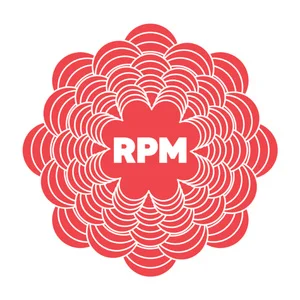

Puerto Rico in crisis
In this episode of Revolutions Per Minute, we will taking you first to Brooklyn and then to Puerto Rico, to explore how neoliberal austerity is wreaking havoc on the lives of ordinary people. I’ll be talking to New York City Council Member Alexa Aviles, of District 38 her first year in office.
Alexa is a proud DSA member and was endorsed by the movement prior to her election. She doesnt take real estate donations and has a track record of opposing the prison industrial complex, having worked to empower marginalized communities before her election as program director of the Scherman Foundation.
The second half of the show takes us to an interview with Ruth Santiago, a trustee of the non-profit Earthjustice who lives on Puerto Rico’s southern coast. As an attorney, Ruth has represented those fighting against environmental injustice in all its forms.
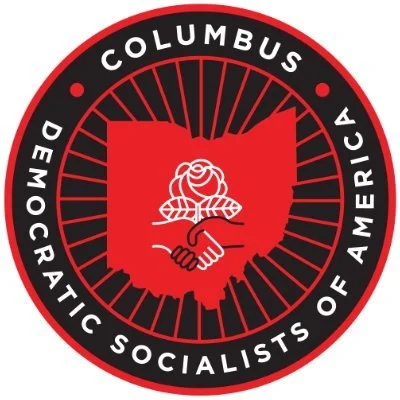

Statement on the Red Oak Community School Drag Story Hour
Fascist violence against LGBTQ+ people in America is a terrible and growing force. Last month, five people – Daniel Aston, Raymond Green Vance, Kelly Loving, Ashley Paugh, and Derrick Rump – were murdered and nineteen others were wounded at Club Q in Colorado Springs. We will remember their names as well as the right-wing cultural narrative that made their suffering possible. Right-wing politicians, media figures, and pretend intellectuals have furthered violence against the LGBTQ+ community by spreading fear and misinformation. The entire right shares the burden of responsibility for the massacre in Colorado.
Here in Ohio, we have become intimately acquainted with the right-wing political movement. It has gained critical ground in our state and scored brutal victories against our people. From shameless police violence in Akron and Columbus to assaults on reproductive rights statewide, artifacts of the right’s surging hatred can be seen everywhere. It will next rear its ugly head here in Columbus on Saturday, December 3, when the Proud Boys – a fascist, white-supremacist paramilitary organization – will menace children and harass families at a drag queen story hour hosted by Red Oak Community School at the First Unitarian Universalist Church. This action is no doubt aligned with the fascist strategy to demonize LGBTQ+ people, incite political violence, and prevent those they deem lesser from ever feeling safe – even in places of worship. We join other groups in our city in condemning the Columbus Proud Boys, their violent rhetoric, and their intrusion into our communities. We call on our members and allies to challenge homophobic ideology wherever it manifests in central Ohio.
No one should ever feel threatened because of their sexuality or gender identity. As human beings, we all deserve safety, freedom, and joy. There is no room for joy in a culture that denies the existence of LGBTQ+ people or that subjects them to mass death for having dared to be who they are. We are finished ceding ground in Ohio to the far right. To counter the spread of fascism, we must build a unified left here in Columbus and abroad.
Columbus DSA is proud to be a part of that struggle, now and forever.
DSA is a socialist feminist and anti-fascist project for collective liberation. Our members are coordinating among themselves and within the community to protect Columbus from extremist violence. For information on how to support the event, including opportunities to fundraise for LGBTQ+ causes and volunteer on the day of, visit the Red Oak Community School website.
Additional Reading:
Abolition of White Supremacy
Gender and Sexuality Justice
Justice for Trans People Requires Power


PUBLIC STATEMENT BY BOSTON DEMOCRATIC SOCIALISTS OF AMERICA IN SUPPORT OF RAIL UNION WORKERS
The rail freight carriers that employ approximately 125,000 unionized employees have spent years prioritizing shareholders and executives, making record profits for the railroad industry. At the same time, the carriers have downsized the rail workforce by furloughing approximately 30% of rail workers, increasing the workload for those who remain. Workers do not receive paid sick time and are expected to be available to work any time of day or night at short notice. On top of this, workers have received a 0% pay increase over the last three years.
The Biden administration brokered a tentative agreement that excluded a substantial amount of the unions’ demands. In a vote of the rail union membership, over half the rail workforce and four of the 12 unions representing those employees voted down this proposal. If there is a strike by the rail workers, any damaging effect on the economy will have been caused by the greed and intransigence of the rail companies, and the failure of Congress and the Biden administration to broker a decent agreement that addresses the workers’ demands.
Boston DSA fully and adamantly supports the democratic right of the rail union workers to vote down any proposed agreement, including the tentative agreement brokered by the Biden administration. Boston DSA opposes any legislation that would impose terms and conditions of employment on the rail unions and thereby take away the workers’ right to strike. The National DSA has also recognized the rail workers right to strike and has put out a statement in support of the rail workers, and Boston DSA concurs with the statement issued by the National DSA.
Most importantly, if and when Congress and President Biden enact legislation taking away the right to strike by the railway workers, Boston DSA will support the actions of the rail workers, including any decision to strike. Boston DSA will be there to support the workers, including joining them on the picket lines. Solidarity now, solidarity forever.


Debunking the Crime Narrative with a Socialist Vision of Public Safety
While a “Red Wave” of victories did not materialize for Republicans earlier this month on election day in most parts of the country, conservatives won big here in New York gaining congressional seats as well as seats in the New York State Assembly and Senate. Republican Lee Zeldin centered his gubernatorial campaign around a false and racist narrative on crime, that dominated media coverage, and it was almost enough to defeat Governor Kathy Hochul, who ran a lackluster campaign despite a large fundraising haul.
The New York Times reported earlier this week that Republican ad blitzes focused on crime, motivated voters to head to the polls in suburban Long Island and the Lower Hudson Valley, despite many of those voters living in some of the safest places in the country, where crime rates have flattened and that many of them had exaggerated views about crime rates in New York City, which are still well below where they were for decades.
Today we’re joined live by Nomi and DJ to break down some of the misinformation that blanketed the airways before the election. Nomi is the Constituent Services and Organizing Manager for Council Member Tiffany Caban and worked with DJ and other volunteers from the district to create a Public Safety Resource poster along with Assemblymember Zohran Mamdani’s office. We’ll talk to Nomi and DJ about how socialist are not only battling right-wing propaganda stoking fear of crime, but organizing for real public safety in our communities and dignity for all.
We’ll also talk to Michaelangelo with Mid-Hudson Valley DSA about what Neoliberal Democrats are getting wrong in their post-election analysis and how centering socialist messaging led Sarahana Shrestha to victory in her Assembly race in the Hudson Valley.
To join a Public Safety Canvass in Western Queens on Saturday, December 3, visit: Bit.ly/safetycanvass


Organizing for workers, trans lives and our unhoused neighbors
Strikes are erupting across the country, from railroads to the New School and your local Starbucks. Reminder from your comrades at RPM - never cross a picket line, just grab a sign and walk alongside them. Workers
Today we will hear from rank and file organizers about the Labor Notes troublemakers school, speak to Shep Whanon of Gays Against Guns on Trans Day of Remembrance and close out the show with Caitlin of the GYM on the brutal sweeps Eric Adams is unleashing upon our most vulnerable unhoused neighbors.
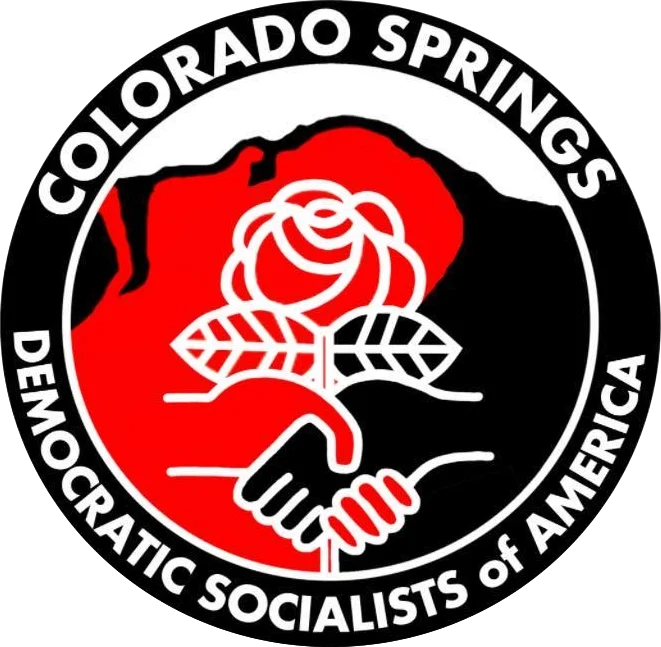

Colorado Springs DSA Statement on the Tragedy at Club Q

It is hard to find the words to express the depth of the trauma and grief that our chapter and community are experiencing in the wake of the mass shooting at Club Q. That we are issuing this statement a few days after the event is a testament to the fact that we have been in deep mourning as we attend multiple community vigils and spend time supporting one another. We all understand how close this act of hatred brought us to losing chapter members who are deeply loved and valued, and our hearts break for our comrades who lost friends and loved ones to this tragedy.
As difficult as it is to move forward, our solidarity with one another and the greater LGBTQ+ community is helping us find the strength to begin the organizing work that must follow. It has not been lost upon us that while CSPD was busy surveilling our chapter last summer and arresting our comrades who were marching for affordable housing in our community, the District Attorney was busy dropping charges against the right-wing terrorist that perpetrated this weekend’s armed attack. It is not lost upon us that this terrorist is the grandson of a fascist MAGA politician in California. It is not lost upon us that Colorado Representatives Lauren Boebert and Doug Lamborn have boosted anti-LGBTQ+ rhetoric while supporting the gun lobby that made this weekend’s tragedy possible. It is not lost upon us that evangelical churches in our city operate as political actors to create a climate of intolerance where bigotry and zealous hatred are incubated. And it is not lost upon us that all these fascist bad faith actors ultimately work together to silence and oppress our community, especially those amongst us who are the most marginalized.
Colorado Springs DSA and the community we serve will not be silenced. We will not submit to the fear that right-wing politicians and their followers try to instill in us. This moment makes it clearer than ever how urgent it is for us to stand up for our community and fight for our rights, to stand against hatred and violent state oppression, to stand against the cold and calculated sacrifice of our BIPOC and LGBTQ+ siblings by fascist capitalists seeking a scapegoat for the inhumane inequality that their greed creates, and we take that stand now, together.
We’ve got us. We stand strong in solidarity, carrying those who are wounded, and march on.
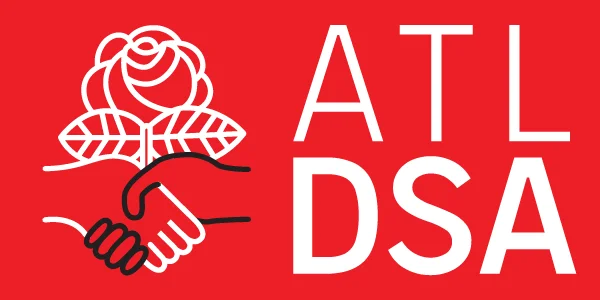

Fight for Abortion Rights, Defeat Herschel Walker
Atlanta DSA Statement on December 6th Senate Runoff Elections
The Senate Runoff Election in Georgia will have important consequences for working-class people across the country. Although Democrats have lost control of the House of Representatives for now, the winner of this runoff will hold a critical Senate seat for 6 years—the entire duration of the next Presidential term. Herschel Walker is a millionaire capitalist and far-right extremist. If elected, he could be the deciding vote that blocks moves to abolish the filibuster and pass other critical legislation. For these reasons we encourage our members, supporters, and the public to vote to defeat Herschel Walker and his far-right agenda.
The 2024 elections will present a huge opportunity for the growing socialist movement to shift the balance of power in the United States. The Left could lead the charge to abolish the filibuster and clear the path for historic gains for the working class by legalizing abortion nationwide and passing the PRO Act. Expanding voting rights could permanently alter the political battlefield and make it impossible for the minoritarian neo-fascists in the GOP to capture the federal government again. Herschel Walker’s election to the US Senate could rule out all of these possibilities for six years.
Make no mistake: working-class people have fundamentally different interests from the neoliberal elites in the Democratic Party establishment. DSA remains committed to advancing our democratic socialist perspective by building a democratic working-class organization. In this election, we are building independent working-class power by making sure that young workers and people of color know how to vote. We are getting out the vote by helping the public navigate barriers to voting, and promoting political issues like abortion rights from a socialist perspective. We encourage everyone to make a plan to vote as early as possible, to join us in continuing to fight for abortion rights no matter who wins the runoff, and to join DSA to help build an economy and society that works for the many, not the few.
Find your polling place and make a plan to vote early at atldsa.org/vote

Georgia Needs a Reproductive Freedom Act

Where were you when you found out that the U.S. Supreme Court had overturned Roe v. Wade? Chances are you remember that moment this past June vividly because for many of us the action was previously thought unimaginable. Even for those who had been paying close attention and saw it coming, the news that the loss of federal protection over reproductive freedom had been confirmed was hard to digest. And in Georgia, the overturning of Roe opened the door for a 6-week abortion ban — which passed in 2019 but was previously blocked by a district court for being unconstitutional — to officially take effect across the state.
Though devastation was felt by so many around the country after the Supreme Court’s Dobbs decision, the truth is, in Georgia — the state with the highest maternal mortality rate in the country — reproductive rights have been under attack for years. Since 2005, Georgia politicians have passed 13 medically unnecessary and politically motivated abortion restrictions, like required waiting periods and insurance coverage regulations. On top of these restrictions, there are only 15 clinics that provide abortions in Georgia. Ninety-five percent of Georgia’s counties do not have an abortion clinic and 55% of Georgia women live in those counties, which means most Georgians must travel a significant distance to abortion providers. This travel can have a serious financial impact on those seeking abortion care, and not just because of transportation costs. Research shows that 60% of people who have an abortion are already parents to one or more child, so childcare costs must also be factored in for those who are forced to travel to obtain an abortion.
Georgians who wish to end their pregnancies also have to contend with anti-abortion fake clinics (also known as anti-abortion centers, AACs, pregnancy resource centers, crisis pregnancy centers, or CPCs), which aim to discourage people from obtaining abortions by posing as real clinics and providing medically inaccurate information. According to the Reproaction Education Fund: Anti-Abortion Fake Clinic Database, there are 99 anti-abortion fake clinics in the state. That means Georgia has over six times more fake clinics spreading false information and shame than real clinics offering safe abortions. Worse still, there is a history of state funds being funneled into these fake abortion clinics. Some anti-abortion fake clinics have financial relationships with state agencies, referred to as “Alternatives to Abortion” or “A2A” programs. According to Mapping Deception: A Closer Look at How States’ Anti-Abortion Center Programs Operate, a report by Equity Forward, Georgia has an A2A program that uses state funding to support fake clinics. Meanwhile, Medicaid does not cover abortions in Georgia. And, just so you’re clear on where hypocritical right-wing candidates in the upcoming Nov 8 election stand on anti-abortion clinics, The Atlanta Journal-Constitution reported that last year, Herschel Walker was paid $20,000 to speak at a fake clinic in Hurst, Texas and $27,000 to speak at one in Augusta, both of which are AACs.
Even with all of the pre-existing abortion restrictions forced on working Georgians, the overturning of Roe v. Wade makes matters even more dire. The Supreme Court decision highlighted a frustration that has been bubbling under the surface for so many citizens regarding an array of issues. High-profile politicians who were already in office inundated our email inboxes with alarming subject lines and messages with no real plan of action beyond “Keep voting Blue.” But how could we believe that continuing to do what we already have been would make any difference? Abortion is overwhelmingly popular across the country and 70% of Georgia voters support abortion access. So, of course, it’s the undemocratic nature of the courts, senate, and gerrymandering that is to blame for this situation, and not those of us who have been voting, election after election. How can we, as working Georgians, change anything?
As Socialists, we are ultimately fighting for universal, free health care and free abortion at the point of service. However, there are some steps we can begin to take legislatively to reclaim and even improve abortion rights in Georgia. Right now, there are local pieces of legislation being proposed to curb the impact of the 6-week ban in Georgia, including county-level decriminalization resolutions and donations to regional abortion funds. Now, with the Georgia legislative session on the horizon, reproductive justice advocates are calling for a statewide Reproductive Freedom Act.
What is the Reproductive Freedom Act (RFA)?
With the right to access abortion care under threat at both the state and national levels, it is past time for our elected representatives to enshrine the right to abortion access and reproductive health care in our state law. That’s where the Reproductive Freedom Act comes in.
Ahead of the 2023 legislative session, reproductive justice advocates are preparing to introduce a Reproductive Freedom Act to the state legislature, with the goal of protecting and expanding access to abortion care across Georgia. With 27 sections, the RFA being proposed would be comprehensive in its support and defense of any person seeking or providing timely, safe, legal, and affordable abortion care. The bill would also fight to remove shame, stigma, and punishment around abortion care, by repealing many current laws and restrictions passed previously by right-wing legislators.
If passed, what would the RFA do?
Based on the current proposal, each section of the RFA pinpoints a specific piece of the puzzle that is achieving reproductive justice for all Georgians. Here is, at a glance, everything the Reproductive Freedom Act would do:
- Ensure that all Georgians have the right to choose or refuse contraception and sterilization, and that those who have the capacity to become pregnant can choose whether to carry a pregnancy to term, give birth, or have an abortion.
- Ensure that no Georgian who ends their own pregnancy will be subjected to investigation and prosecution.
- Repeal a set of laws that criminalize some or all abortion care.
- Repeal the 2019 law that establishes each fetus as a “person,” which gives a fetus rights separate from the pregnant person.
- Repeal law requiring any young person who needs an abortion to notify their parents.
- Repeal a law that requires physicians who care for pregnant patients later in pregnancy to provide a specific type of resuscitative care regardless of the circumstances.
- Repeal medically unnecessary TRAP (targeted restrictions on abortion provision) laws that make abortion more difficult to provide and obtain, under threat of criminal penalties.
- Repeal a criminal law prohibiting qualified physician assistants, nurse practitioners, and trained certified nurse midwives from providing abortion care, and a second law prohibiting physician assistants specifically from providing medication abortion.
- Repeal state-mandated counseling and delay law, which requires abortion patients to receive medically unnecessary and inaccurate information and then wait 24 hours before being allowed to obtain an abortion.
- Repeal laws that prohibit insurers from offering coverage for abortion care in state benefit health plans, and require Medicaid to offer coverage for abortion.
Why is it important to pass the RFA?
Georgia’s current abortion bans and restrictions are based on anti-abortion ideology, not medical science, and are opposed by the AMA and other leading medical authorities. The current laws ignore the fundamental fact that abortion is health care and therefore should be regulated as such. Just like with any other medical procedure, decisions about abortion — as well as contraception, sterilization, and fertility issues — should be made by a patient and their doctor.
Giving a fetus rights separate from the pregnant person is one specific way that anti-abortion lawmakers are taking the ability to make these important decisions out of the hands of patients and providers, and it has serious consequences. For example, it could impact anyone using in-vitro fertilization, people accessing medical care that poses a risk to a fetus (such as chemotherapy), the use of birth control pills or IUDs (despite science stating otherwise), and could open pregnant people and doctors up to criminal investigation for actions during pregnancy.
Even the threat of criminalization can discourage someone from accessing critical health care during the prenatal, birthing, or postpartum period, which can have damaging effects on their physical and mental well-being and a negative impact on their lives and futures. This piece is especially hairy for young people, who are still in the early stages of building their lives. Just because a person is under 18 doesn’t mean they shouldn’t be allowed to make important decisions about what is best for their health and future. In an ideal situation, a young person can seek the advice of a parent, but of course, not everyone lives in ideal circumstances. Studies have also shown that anti-abortion fake clinics target young people. So, it is critical that the barriers be removed in order to allow every person, regardless of age or reason, to access health care and information.
How to Support the RFA
Don’t allow that hopelessness you felt when Roe was overturned to take hold. There is still a path forward for reproductive freedom in the state of Georgia, but it requires a fight. While the right wing is doing everything it can to suppress our rights and our bodily autonomy, it’s essential that working people fight back on all fronts possible, including the electoral and legislative fronts. Again, as Socialists, our end goal is free health care, including free abortion, for all people. On the way there, we need to advocate for our local representatives to use all their power to protect our right to abortion and commit to voting yes and pushing the RFA through.
To help us do that, sign and share the existing petition to pass the RFA in Georgia. Email your representatives and let them know you support the RFA. Attend canvassing events with DSA and follow along for updates on other pieces of local legislation to protect abortion. Together, we can win!
The post Georgia Needs a Reproductive Freedom Act appeared first on Red Clay Comrade.
